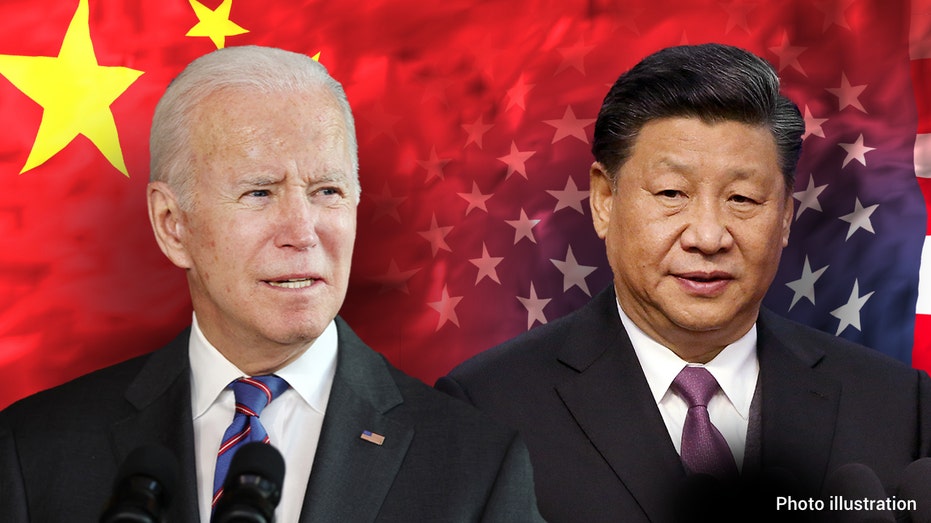The Energy Department is asking for bid prices to add around 3 million barrels to the strategic petroleum reserve. Administration officials say the additional oil will begin to be added in January. It’s just a drop in the bucket compared to the nearly 300 million barrels President Biden has released since he took office. While the U.S. stockpile was declining, China was adding to its reserves.
“I think China is looking ahead at the future and seeing that geopolitically, economically, there’s a great deal of uncertainty and volatility in the world,” American Exploration and Production Council CEO Anne Bradbury said.
In November 2021, President Biden announced the U.S. and other countries would release millions of barrels from their oil stockpiles. At the time, even China had said it would tap its reserves.
“They all agreed to release additional oil from the reserves, and China may be doing so as well,” Biden said in December 2021.
EXPERTS RAISE ALARM AFTER BIDEN STRIKES AGREEMENT WITH CHINA TO SHUT DOWN FOSSIL FUELS
It appears China never sold from its reserves after Biden’s remarks.
“We have no evidence to show that China drew down its strategic reserves in conjunction with the November 2021 strategic draw,” Managing Director of Clearview Energy Partners Kevin Book said. “The reason probably has something to do with China’s own perception of its security. They probably didn’t want to put themselves at any more risk.”
BIDEN’S WAR ON OIL DRILLING THREATENS TO KILL HIS OWN GREEN ENERGY GOALS: ‘A LOT OF UNCERTAINTY’
China’s National Food and Strategic Reserves Administration said at the time that the sales would occur close to the Lunar New Year. That fell on Feb. 1 in 2022. On Feb. 4, 2022, Russian President Vladimir Putin met with Chinese President Xi Jinping in Beijing for the Winter Olympics. Russia’s invasion of Ukraine was just 20 days away.
As Russian troops gathered at the Ukrainian border, the White House threatened sanctions against financial institutions. The administration pushed back against concerns China could help Russia avoid the sanctions.
“China may want Russia as its junior partner for gas or cheap oil. But let’s not pretend it’s anything else,” White House Deputy National Security Adviser Daleep Singh said during the announcement.
Days later, the invasion officially began, prompting U.S. economic sanctions against Russia. By March, the U.S. had added oil sanctions. The European Union reached an agreement in May, announcing it would back most Russian oil by the end of 2022. By then, the U.S. and allies had agreed to release millions of barrels from their reserves over several months to combat high prices. Meanwhile, China was buying and stockpiling cheap oil.
US SEIZED NEARLY 1 MILLION BARRELS OF IRANIAN OIL BEING SMUGGLED TO CHINA
“When Putin weaponized energy, basically it sent a shock wave to Europe, our allies, and we weren’t able to help them because we weren’t energy secure ourselves,” Sen. Joe Manchin, D-W.Va., said.
European Union member states are mandated to have at least 90 days of crude oil in reserves. After the drawdowns, nearly half of European countries fell below their 90-day target.
“The EU is really ground zero for supply disruptions over the last couple of years as they try to wean themselves off of Russian oil and natural gas,” Bradbury said. “The strategic reserves are critical, and they’re going to continue to be critical moving forward.”
The U.S. sold some of its reserves to China. The Energy Department announced Unipec America Incorporated purchased nearly 1 million barrels. The company is a wholly-owned subsidiary of China International United Petroleum and Chemical Co. Ltd.
“China loves a bargain,” Book said. “They are the biggest oil importing country in the world. And when they can save a barrel, they’re probably going to save a barrel. When they can save money on a barrel, they’re probably going to do that too.”
China does not disclose how much crude oil flows in or out of its strategic reserves, but analysts point to an increase in imports from cheap sellers like Russia and Iran. Trade data reveals China could be sitting on a massive stockpile of oil.
“China depends on imported energy for about 25% of the energy it consumes. So having energy in reserve when you’re that dependent on imports is extremely important,” Book said.
Data from S&P Global estimates China’s crude oil inventory, which compromises its commercial and strategic petroleum reserve, could be more than 1.1 billion barrels.
“We know that Russia and China are working together and that China has very few qualms about purchasing Russian oil and about putting its own energy security first and foremost,” Bradbury said.
China imports cheap oil from countries facing U.S. sanctions, like Russia and Iran. Imports from Russia increased by nearly 23% in the first half of 2023 to more than 2 million barrels per day. China is Iran’s top customer, buying an estimated 1 million barrels per day in 2023.
Iranian oil is often relabeled as originating from countries like Malaysia, the UAE or Oman to avoid sanctions. However, oil market experts say China’s oil strategy has had little impact on the overall market.
“It doesn’t directly affect the global market in the sense that the oil price essentially reflects the global supply and demand balance,” Book said. “If China didn’t buy the oil from Russia and Venezuela and Iran, then maybe somebody else would.”
























